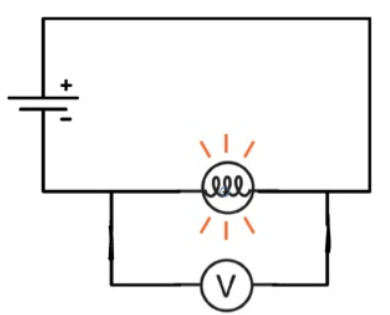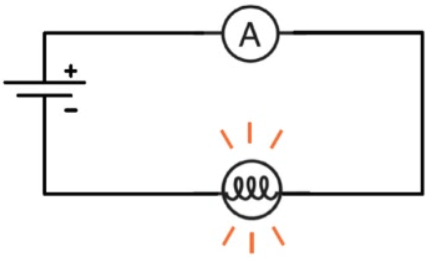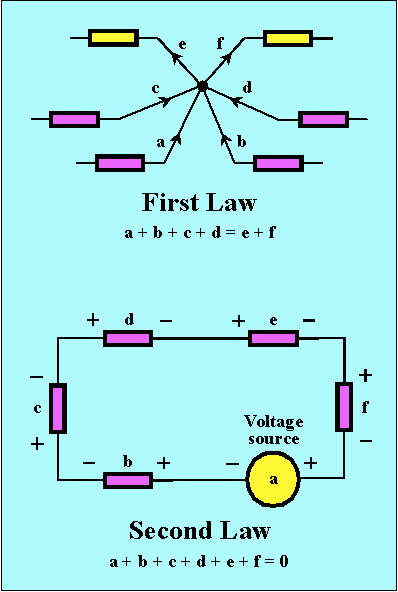Electrical Circuits
An electrical circuit is a closed-loop path through which current can flow
An electrical circuit can be made up of most any materials but practically speaking, circuits are typically comprised of electrical devices
Wires
Batteries
Resistors
Switches
Conventional current flows from high potential to low potential
Voltmeters
Voltmeters measure the potential difference between two points in a circuit
Voltmeters are connected in parallel with the element to be measured
If a voltmeter is connected correctly, you can remove it from the circuit without breaking the circuit
Voltmeters have very high resistance

Ammeters
Ammeters measure the current flowing through an element of a circuit
Ammeters are connected in series with the circuit, so that the current to be measured flows through the ammeter
The circuit must be broken to correctly insert an ammeter
Ammeters have very low resistance to minimize the potential drop through the ammeter

Series Circuits
Series circuits have only a single current path
Removal of any circuit element causes an open circuit

Kirchhoff's Laws
Kirchhoff's Laws are tools utilized in analyzing circuits
Kirchhoff's Current Law (KCL) states that the sum of all current entering any point in a circuit equals the sum of all current leaving any point in a circuit
Restatement of conservation of charge
aka "Junction Rule"
Kirchhoff's Voltage Law (KVL) states that the sum of all the potential drops in any closed loop of a circuit has to equal zero
Restatement of conservation of energy
aka "Loop Rule"
